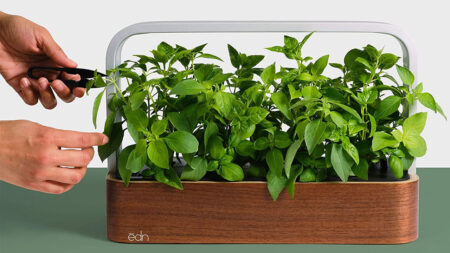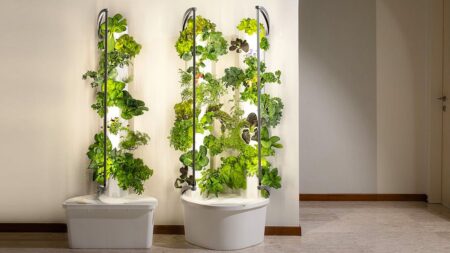Not a fan of the cold, for me, spring is the most wonderful time of the year. Winter is over and it is time – for everyone like me – to step outside the house and enjoy the balmy breeze before the scorching heat wears down the enthusiasm. Spring calls for rearing the garden back to luster; if you’re following, let’s get down to preparing the garden for the season with helpful spring gardening tips you wish you knew earlier.
After the stagnation of the winter, spring is the most active time to replenish your outdoors. By cleaning out and preparing the garden beds, repairing hardscaping, and pruning, start the growing season on the right foot. I love to work in the soil, tilling the ground, adding nourishment, pouring in seeds, and watching the most amazing process of nature. It is simply a delight that winter just can’t offer (no offense, snow lovers), but doing it right is the key.
Whether you are a seasoned gardening enthusiast or a novice, it is time to get ready to grow flowers, vegetables, and plants. Professional gardeners reveal a handful of useful tips to help you prepare the garden. In this detailed article, we will comprehend why and how to prepare the garden for the spring season.
Why Prepare the Garden for Season
With spring comes the opportunity to grow a variety of plants in your garden whether you want vegetables or a patch of flowers to attract buzzy visitors. After the cold retreats, your garden needs all the love it can get so you need to inspect it, take care of the soil, prune shrubs, plant carefully and strategically, and add mulch to nourish both plants and soil.
When growing plants from seed to full bloom, a lot of different factors come into play and determine how the ground will replenish and nourish the saplings in your garden. You need the right preparation, tools, and course of action to rejuvenate the barren yard.
While gardening tasks after winter frost may seem daunting, a simple instructional guide can help you achieve the vibrant and refreshing view we all want in our garden as spring dawns. So now that you know why you need to prepare the garden, let’s get the tools out and accomplish the task with skill and precision.
Also Read: Smart and Planet-Friendly Ideas to Transform Your Garden
Tools You Need
While you can get your hands dirty, you do need a handful of essential tools to restore your garden to its glory. These tools will help you tackle spring gardening chores with ease. Here are some must-have garden tools you need in your arsenal:
- Garden Trowel and Fork: To prepare the soil and work on your plants, you must have a garden trowel and fork. These tools are good for tuning the soil and loosening and removing weeds. The trowel will help dig in the soil with ease and for planting new seeds or bulbs while the fork will help break the soil.
- Pruning Shears and Loppers: Best gardening tools to cut and trim branches and stems, pruning shears and loppers are handheld tools that have long handles to offer better grip. You can trim thicker branches with them. To make things less cumbersome, you can invest in an electric hedge trimmer.
- Garden Shovel: A garden shovel is a must when you are working on an outdoor garden. It makes it easier to dig into the soil or edge around the garden, help lift sod, and move things like soil or fertilizer from one place to another.
- Wheelbarrow: When preparing the garden for spring, you are going to be moving a lot of things around such as soil, compost, and mulch. A wheelbarrow lets you keep the gardening tools organized and facilitates their transportation, all at once. You can go for versatile designs that can be used as a dolly, yard cast, and more.
- Hoe and Rake Tools: The hoe garden tool and garden rake can help you make garden beds. The rake will clear up debris while the hoe tool removes weeds. If you are working on a vegetable garden, you might want a heavier hoe tool with a wider blade. On the other hand, a lighter hoe garden tool with a thinner blade is more suitable for flower beds.
- Watering Equipment: Your garden tool kit is incomplete without irrigation equipment. You require a good garden hose with a spray nozzle, one watering can, and a shorter watering lance.
Also Read: An Expert Guide on How to Care for and Maintain Garden Tools
Spring Garden Tips
The blast of blooming leaves and wafting fragrances from a myriad of flowers is all around as if the earth is waking up from a deep slumber, shaking off the remnants of cold and inertia. That is spring and it is the most exciting season of all. But to achieve that look and feel in your garden, it is crucial to prepare the ground to assure a nutritious harvest. So let’s get to it with these simple yet useful spring garden tips.
Make a Plan
Obviously, this sounds cliché; but without a plan, things can get derailed rather quickly and you may end up working more than you initially planned. By making a plan, you ensure which seeds to plant according to what grows best where you live. For instance, not all plants are meant to be planted at the beginning of spring. Many bulbs and ground cover benefit from a late spring or autumn planting. But that is easy to figure out as most seed packs have that information printed on them.
Ready Your Tools
Before you dive into your spring gardening chores, you should get the tools ready. If they weren’t stored properly for winter, give your tools some love so they are in good shape when it is time to work. Your pruning tools will benefit from sharpening, while the wood handles will need to be cleaned, sanded, and massaged with linseed oil. Polish your tools and arrange them for a smooth process.
Survey the Grounds
Once you have a plan in mind, you can get to work. It is best to take care of any disrepair caused by freezing and thawing of the ground before you plant new seeds. Begin by assessing the trees and shrubs in the yard. The tree limbs overhanging structures need to be removed or cabled. You can either DIY your way through it or hire an arborist to maintain the large trees. Then, cut down perennial foliage from the last year and put it into the compost bin. Next, rake mulch from beds planted with bulbs before foliage appears and add fresh mulch in there.
Refresh the Lawn
Refreshing the grounds is an important step in your guide for spring gardening. If there’s grass, get your mower and leaf blower to work. With the right tools, you can even sharpen the mower blades for an excellent job. You need to refill the mower with oil, fix fresh spark plugs, and grease moving parts. The mower and leaf blower will help clean the grounds of winter debris.
Also Read: 10 Best Automated Indoor Gardens to Buy in 2023
Test and Prepare the Soil
According to the experts, you should test your garden soil every 3-5 years to check the nutrition levels and organic material requirements and provide it with what it needs. For instance, if the soil has a high concentration of phosphorous, you should avoid adding fertilizers. If the soil is naturally alkaline, provide it aluminum sulfate around the evergreens and acid-loving shrubs such as hydrangeas.
Feed the Soil
The soil tests should reveal if anything is amiss. You can consult an expert gardener or a local garden center to know about specific products that you can use to replenish the soil. The rule of thumb is to topdress the soil with an inch or two of compost, humus, or manure in early spring or when the bulbs are starting to emerge. It will nourish the soil, increasing its fertility so that your garden will be in full bloom.
Get New Beds Ready
Creating new beds is one of the most exciting experiences; turning a barren piece of land into a lush spot is truly fulfilling. Dig the soil, add oxygen, and relieve compaction to stimulate the making of a rich, living soil. Clear out the planting area, remove sod and debris, spread a 4-inch layer of compost or manure, cultivate it to the required depth with the garden fork, and rake it smooth before planting.
Divide Perennials and Transplant Shrubs
In early spring the perennials are just beginning to bud, it is time to divide and transplant any large or outgrown perennials. Experts advise that you should move summer and fall blooming perennials to spring and spring blooming perennials to fall. You can move evergreen shrubs in early spring, whereas deciduous shrubs can be moved anytime they are not in bloom. To sum up, it is best to move plants in their dormant state so they can bounce back up upon the arrival of spring.
Time for Planting Containers Plants
The best time to transplant container garden plants has come. Early spring crops include seeds of cool-season flowers such as sweet peas, poppies, and calendula, and vegetables like lettuce, parsley, and spinach. Just be sure to water them religiously before and after you plant them. Most annual flowers require the soil to warm up a little before planting. You can fill your spring containers with sweet alyssum, lobelia, and Supertunia petunias.
Also Read: Garden Pathway Design Ideas to Landscape the Way Home
Compost When in Doubt
The easiest thing any gardener – beginner or seasoned – can do to prepare their spring garden is to add fresh mulch or fertilizer to fuel the growth. You may already have dead leaves, straws, or finished compost that you can add to the ground to rejuvenate its fertility. You can spread high-acid fertilizer and mulch around the shrubs; it will help perennials resume active growth.
Conclusion
You can maintain your spring garden with these essential trips, while some landscaping ideas will restore the outdoors to its glory. It is important to note that you must have your tools in pristine condition to perform the task properly. With rusty tools, pruning, and raking will get difficult and demand more labor than needed.
Follow Homecrux on Google News!




